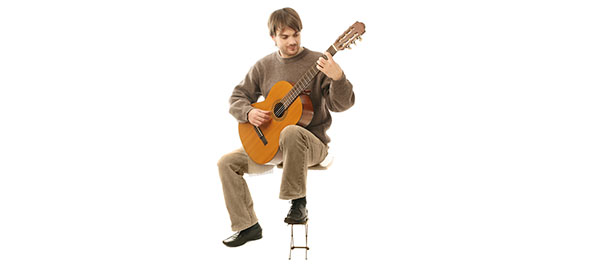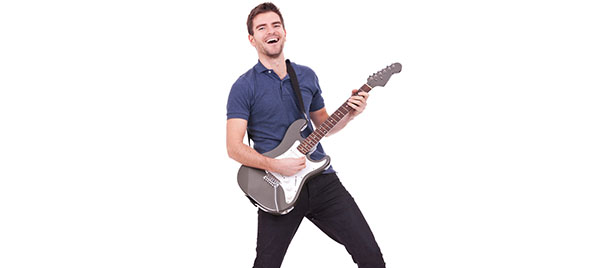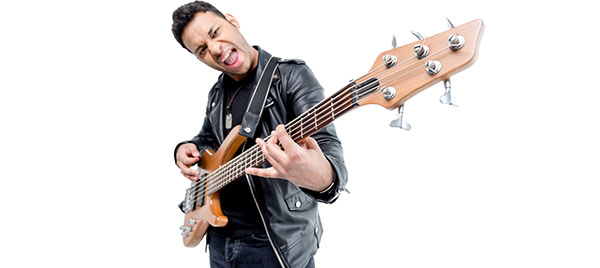- Home
- Instruments
- Gear
- Recording
- Lessons
- Reviews
- Blog

An experienced guitarist may question why anybody would need a lesson on holding the guitar, although they probably don’t remember the first time they were handed one!
The reason is that guitars and basses are often big, cumbersome instruments, especially for beginners, and the correct way to hold one may not always be apparent.But fear not! We are here to offer you a step-by-step guide on holding a guitar as well as advice on how to adapt this for electric, classical and bass guitars. Ready? Let’s go!

As many players will learn how to play guitar on a steel-string acoustic, we will begin with a step-by-step guide on how best to hold one.
For the sake of simplicity, in this guide we are assuming you are a right-handed player (where your dominant/strumming hand is your right). If you are a left-handed player, simply reverse these instructions.
Sitting down is a good way to start learning how to play the guitar. However, when you nail the basics, you may want to start playing standing up, which most people agree looks cooler and allows you to get into the rhythm of the song.
Playing while standing up isn’t too different to playing while seated and the fundamentals are still the same – keep your back straight and shoulders relaxed.
If you are going to stand up to play the acoustic guitar, buying a good strap is essential, as you need something to help support the guitar (trust us – balancing it on your thigh while standing is a lot more difficult!).
Pretty much all straps are adjustable, which is useful because it allows you to experiment with the optimum height. Everyone is different, so find something that feels comfortable to you, although the best height for standing is around where the guitar rests on your body while sitting down. It’s rare that the guitar will be too high, but if you find you are hunching over, the guitar is too low!

While steel and nylon-stringed guitars are around the same size, you will hold a nylon-stringed guitar slightly differently if you are playing classical music.
In short, the main differences are:
Ultimately you can indeed play classical guitar by holding the guitar as you would a steel-string acoustic, although holding it the traditional way allows you to easily access the fretboard, as your body holds the guitar in place.
Whichever way you hold it, ensure you are sitting upright, with relaxed shoulders, and on the edge of a hard chair (as opposed to a couch or bed).

Holding an electric guitar is very similar to holding a steel-string acoustic, whether standing or sitting. If you haven’t already done so, read the acoustic guitar section above to learn everything you need to know.
A word of advice – when buying an electric guitar for a beginner, consider how it will feel on your thigh when sitting. By this, we mean avoid something like a Flying V-shaped guitar, which isn’t the most comfortable shape to rest on a thigh when sitting. It may be best to keep the more extravagant styles for when you are more confident.

Bass guitars are longer instruments than electric, acoustic and classical guitars, although the way you hold one will not be too different.
Firstly, whether playing standing or sitting, wearing a strap is essential as it helps take some of the weight off this hefty instrument and makes balancing it a little easier.
When sitting, you may want to elevate your right leg (not the left, as with classical guitar), by resting your foot on a box or a footrest. This will help bring the bass closer to you and easier to play.
When standing, it is popular to hold the bass slightly higher on the body by adjusting the strap. This makes it easier to navigate the longer fretboard. Although play around with the height until you find something that feels comfortable.
As with the other styles of guitar, always try to keep your back straight and your shoulders relaxed for the best results!

Reader Interactions